About Anxiety
Learn More About Anxiety
When an individual suffers from profound fear, apprehension, or worry to such a degree that these feelings hinder a person’s ability to function in a healthy manner, it is likely that an anxiety disorder is the cause. The Fifth Edition of the Diagnostic and Statistical Manual of Mental Disorders outlines several types of anxiety disorders that often have an identified trigger that elicits the manifestation of symptoms. The following disorders are examples of the mental health conditions classified as anxiety disorders:
Specific phobia is an appropriate diagnosis when a person experiences a great deal of trepidation related to a specific stimulus. Examples of such stimuli can be insects, flying, animals, heights, or blood.
Social anxiety disorder is characterized by marked anxiety related to a social situation or situations in which a person is fearful of being scrutinized by others when talking with, speaking in front of, or simply interacting with others in an unfamiliar environment. Oftentimes, sufferers of this type of anxiety disorder will go to great lengths to avoid such circumstances, even if a negative outcome as a result of the avoidance occurs.
Panic disorder involves intense distress that often manifests with physiological responses when an individual becomes overwhelmed with worry about some sort of real or imagined impending doom or danger. Those who meet diagnostic criteria for panic disorder may experience a pounding heartbeat, profuse sweating, difficulty breathing, dizziness, or body temperature changes that can occur without warning.
Generalized anxiety disorder (GAD) is an anxiety disorder that lacks an identified precursor to the feelings of fear, worry, or apprehension. In many cases, sufferers of this disorder experience ongoing anxiousness that ultimately impairs them from being able to perform even the most mundane of daily tasks.
Should the symptoms of the above anxiety disorders become apparent, it is necessary to seek mental health treatment in order to avoid the long term consequences that are known to result when a person fails to seek care for such an illness. If a person is struggling with a substance abuse problem at the same time as an anxiety disorder, seeking such care is even more important as the abuse of drugs and/or alcohol can ultimately worsen anxiety symptoms and lead to a whole host of additional adverse outcomes. Luckily, however, effective treatment that is able to address anxiety disorder symptoms and any co-occurring disorders does exist and has helped countless individuals live happier and healthier lives.
Statistics
Anxiety Statistics
Among the mental health conditions in existence, anxiety disorders are some of the most frequently diagnosed mental illnesses affecting people today. It is estimated that one in ten adolescents and two in five adults suffer from a form of anxiety at some point in life. Additionally, research has concluded that female adolescents and women are more likely to grapple with anxiety than are male adolescents and men. However, despite how seemingly common it is to suffer from an anxiety disorder, it is estimated that only one-third of people who suffer from anxiety actually seek treatment. Lastly, recent research has found that individuals who are living with untreated anxiety are six times more likely to be hospitalized for psychiatric reasons than are those who are currently receiving care to treat anxiety disorder symptoms.
Causes & Risks
Causes and Risk Factors for Anxiety
When trying to understand why and how a person comes to suffer from an anxiety disorder, it is imperative to consider the various causes and risk factors that are likely to influence the onset of such an illness. In addition to several risk factors, the following are among the most frequently cited causes for why some people suffer from anxiety disorders while others do not:
Genetics: If an individual has a parent or sibling that has struggled with anxiety disorder symptoms, it is very likely that that person will also suffer from anxiety at some point in life as well. A great deal of research supports this notion, as family studies have proven that people who share similar genetic backgrounds are often afflicted by the same type of mental health conditions.
Environmental: In addition to the influence one’s genetics can have on a person’s vulnerability to the onset of anxiety disorder symptoms, the environment in which one spends most of his or her time can affect whether or not anxiety will be a factor in an individual’s life. Exposure to chronic stress, trauma, and lacking an appropriate network of support can all increase a person’s risk for experiencing intense anxiety. This risk is increased further if an individual does not possess the necessary skills for coping with undue distress.
Risk Factors:
- Being in an environment ripe with chronic stress
- Lacking a strong support system
- Unstable home environment
- Having a traumatic past
- Low socioeconomic status
- Being female
- Family history of an anxiety disorder(s) or other mental illness
- Personal history of a mental health condition or conditions
- Possessing certain personality characteristics and temperament
Signs & Symptoms
Signs and Symptoms of Anxiety
Depending on the anxiety disorder that a person is suffering from, the telltale signs of such a condition may or may not always be apparent to loved ones. Additionally, the age of the person battling anxiety, as well as the severity of the symptoms present, can impact the obviousness of the signs that are displayed. The following are examples of various signs and symptoms that may infer that an individual is grappling with an anxiety disorder:
Behavioral symptoms:
- Procrastinating
- Exaggerated startle response
- Engaging in ritualistic behaviors
- Poor academic or occupational performance
- Not fulfilling roles or expectations at school, work, and/or home
- Missing days of school or work
- Social isolation
- Angry or aggressive outbursts
- Avoiding certain people, places, or situations
- Restlessness
Physical symptoms:
- Perspiration
- Increased heart rate
- Fluctuations in body temperature
- Tense muscles
- Headaches
- Stomachaches
- Dizziness
- Frequent urination
- Weakened muscles
- Fatigue
- Difficulty breathing
- Insomnia
- Change in eating habits
Cognitive symptoms:
- Poor concentration
- Nightmares
- Cyclical thinking
- Rapid thought processes
- All-consuming obsessions
- Irrational compulsions
- Fleeting ideas
- Experiencing difficulty in making decisions
Psychosocial symptoms:
- Feeling as though one is powerless
- Emotional detachment from others and one’s surroundings
- Guilty feelings
- Abrupt mood changes
- Ongoing worry
- Overwhelming apprehension
Effects
Effects of Anxiety
Individuals who continue to suffer from the symptoms of an anxiety disorder without seeking treatment are likely to experience adversity across several areas of their lives. The following are among the negative effects that are known to occur when an individual suffers from untreated anxiety:
- Self-harming behaviors
- Suicidal ideations
- Suicide attempts
- Development of a substance use disorder
- Discord among family members
- Increased conflict with peers or loved ones
- Academic failure
- Poor occupational performance
- Social withdrawal or isolation
- The development of another type of anxiety disorder or other mental illness
- Decline in academic performance
- Loss of employment
Co-Occurring Disorders
Anxiety & Co-Occurring Disorders
It is very common for a person to suffer from an anxiety disorder at the same time as another mental health condition. Furthermore, many individuals who battle anxiety disorders grapple with substance use disorders at the same time, as people struggling with anxiety often find false solace in the abuse of drugs and/or alcohol when their symptoms are untreated and distressing. Aside from substance use disorders, the following are the mental illnesses known to occur alongside anxiety disorders:
- Borderline personality disorder
- Attention-deficit/hyperactivity disorder
- Other anxiety disorders
- Posttraumatic stress disorder
- Depressive disorders
- Bipolar disorder
- Schizophrenia
















